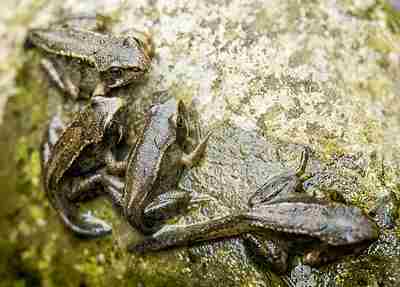5 Effects of Landfills on the Environment Explained
Effects of landfills on the environment are; greenhouse emission, air quality reduction, leachate pollution, littering, and groundwater contamination.
They may be grouped broadly into air, soil and water, and groundwater effects of landfills.
This article discusses the effects of landfills on the environment, as outlined below;
-Effects of Landfills on Soil and Surface Water
-Effects of Landfills on Groundwater
-Effects of Landfills on Air
Effects of landfills on air include greenhouse emission and air quality reduction.
1). Greenhouse Emission (as one of the Effects of Landfills on the Environment)
Landfills emit greenhouse gases in large volume; so that landfilling is often considered to be one of the highest greenhouse gas producers among all waste management practices.
The main cause of such emissions is biodegradation of organic waste materials in landfills [2].
Because the landfill process includes waste burial, decomposition of biomass components occurs slowly in the presence of limited air supply, making the process similar to anaerobic digestion and some other waste-to-energy processes.
The result is large amounts of methane, water vapor, carbon dioxide and hydrogen sulfide.
Aside their roles in climate change and global warming, these gases contribute to other hazards and other forms of environmental degradation like acid rain, and landfill fire hazards.
Methane emissions from landfills are particularly significant, and estimated to reach 400 kg per ton of waste [5].
Efforts to achieve sustainability and protect the environment while using landfills, include active energy recovery, recycling, and carbon capture.
Energy recovery from landfills involves the installation of equipment to collect landfill gas or biomethane, which is a renewable fuel and source of energy. Rather than be released into the atmosphere as a greenhouse gas, this fuel may be used for heating and electricity generation, among other purposes.
Decarbonization of waste management is an important concept with respect to landfill greenhouse emissions. Carbon capture equipment as well as natural carbon sequestration mechanisms can be implemented to mitigate landfill emissions and their environmental impacts.
2). Air Quality Reduction
Landfills are known to have notable, negative effects on air quality.
These effects are usually worse in non-sanitary landfills, or other types of landfills which are poorly maintained.
As organic waste decomposes, it produces odorous gases like hydrogen sulfide and methanethiol [1], which instantaneously reduce the quality of air.
Pathogens from such decomposition processes can also be carried in air as bioaerosols, which are behind some of the effects of landfills on human health [4].
Particulate matter can also be released during landfill fire hazards, or when incineration or deliberate waste-burning is practiced in landfills.
The effects of landfill emissions on air can make the environs un-conducive, and may reduce air circulation and wind flow rates [6].
-Effects of Landfills on Soil and Surface Water
Effects of landfills on soil and water include leachate pollution and littering.
3). Leachate Pollution
Leachate pollution is a common effect of landfills on soil and water.
Leachate itself refers to a concentrated liquid produced as waste materials decompose in landfills.
The formation of leachate is facilitated by rainfall, and infiltration or percolation of water into landfill waste.
Compounds and elements contained in leachate are usually toxic, and include heavy metals, ammonia and organic compounds.
When leachate infiltrates soil, it alters the physicochemical properties of the soil ecosystem, thereby reducing its usefulness and capacity for various purposes including agriculture.
In areas where heavy rainfall and flooding are rampant, the risk of leachate pollution from landfills is generally higher. Runoff can transport leachate into water bodies like streams, lakes and rivers; leading to pollution of these media. Large volumes of such runoff can cause stormwater pollution.
Leachate pollution is linked to the effects of landfills on animals, natural habitats and human health.
Efforts to mitigate the risk of landfill leachate pollution are included in the process of landfill disposal. Namely, they are; waste compaction and waste burial or covering.
The design of sanitary landfills also includes liner materials like geosynthetic clays, which are laid at the bottom of landfills to prevent leachate from infiltrating the soil [7]. Specialized collection and treatment systems for the fluid can also be integrated into landfills.

4). Littering
Materials that are dumped in landfills may be dispersed by wind, scavengers or vermin, and may cause littering of the environs.
This is both a form of soil (or land) pollution and a form of aesthetic pollution.
Littering reduces the value of properties or resources within the area, and may contribute to health and economic problems. Injury of residents or workers around landfill sites by littered materials like metals and glass, is an example of such problems.
The risk of environmental littering by landfills is higher when sustainable or sanitary practices are either absent or improperly applied. This includes negligence of proper waste compaction and burial.
Landfill littering has been the grounds of various calls for the reduction of landfill waste, and the use of alternative waste management methods.

-Effects of Landfills on Groundwater
5). Groundwater Contamination
Contamination of groundwater by landfills is usually caused by leachate, and almost simultaneous with soil and surface-water pollution.
Groundwater pollution occurs when leachate enters into the subsurface and reaches the water table, as a result of infiltration through the soil [3].
Factors like precipitation and runoff can enhance both the rate and severity of groundwater pollution by leachate.
The risk is also higher in cases where the landfill contains hazardous waste materials like industrial waste.
Using natural clays or synthetic materials (liners) to protect the bottom of landfills can help to address this problem.
Conclusion
Effects of landfills on the environment are;
1. Greenhouse Emission
2. Air Quality Reduction
3. Leachate Pollution
4. Littering
5. Groundwater Contamination
References
1). Catena, A. M.; Zhang, J.; Commane, R.; Murray, L. T.; Schwab, M. J.; Leibensperger, E. M.; Marto, J.; Smith, M. L.; Schwab, J. J. (2022). “Hydrogen Sulfide Emission Properties from Two Large Landfills in New York State.” Atmosphere 2022, 13(8), 1251. Available at: https://doi.org/10.3390/atmos13081251. (Accessed 8 November 2022).
2). Mahar, R. B.; Liu, J.; Yue, D.; Nie, Y. (2007). “Biodegradation of Organic Matters from Mixed Unshredded Municipal Solid Waste through Air Convection before Landfilling.” Journal of the Air & Waste Management Association (1995) 57(1):39-46. Available at: https://doi.org/10.1080/10473289.2007.10465296. (Accessed 8 November 2022).
3). Mouine, Y.; Hamdi, A.; Moad, M.; Valles, V. (2022). “Groundwater Contamination Due to Landfill Leachate—A Case Study of Tadla Plain.” Environ. Sci. Proc. 2022, 16(1), 53. Available at: https://doi.org/10.3390/environsciproc2022016053. (Accessed 8 October 2022).
4). Nair, A. T. (2021). “Bioaerosols in the landfill environment: an overview of microbial diversity and potential health hazards.” Aerobiologia 37(1). Available at: https://doi.org/10.1007/s10453-021-09693-9. (Accessed 8 November 2022).
5). Nordahl, S. L.; Devkota, J. P.; Amirebrahimi, J.; Smith, S.; Breunig, H. M.; Preble, C. V.; Satchwell, A. J.; Jin, L.; Kirchstetter, T.; Scown, C. D. (2020). “Life-Cycle Greenhouse Gas Emissions and Human Health Trade-Offs of Organic Waste Management Strategies.” Environmental Science and Technology. Available at: https://doi.org/10.1021/acs.est.0c00364. (Accessed 8 November 2022).
6). Sonibare, O. O.; Adeniran J. A.; Bello, I. S. (2019). “Landfill air and odour emissions from an integrated waste management facility.” Journal of Environmental Health Science and Engineering 17(1). Available at: https://doi.org/10.1007/s40201-018-00322-1. (Accessed 6 November 2022).
7). Visentin, C.; Zanella, P. N.; Kronhardt, B. K.; Trentin, A. W.; Braun, A. B.; Thomé, A. (2019). “USE OF GEOSYNTHETIC CLAY LINER AS A WATERPROOFING BARRIER IN SANITARY LANDFILLS.” Journal of Urban and Environmental Engineering. Available at: https://doi.org/10.4090/juee.2019.v13n1.115124. (Accessed 8 November 2022).

